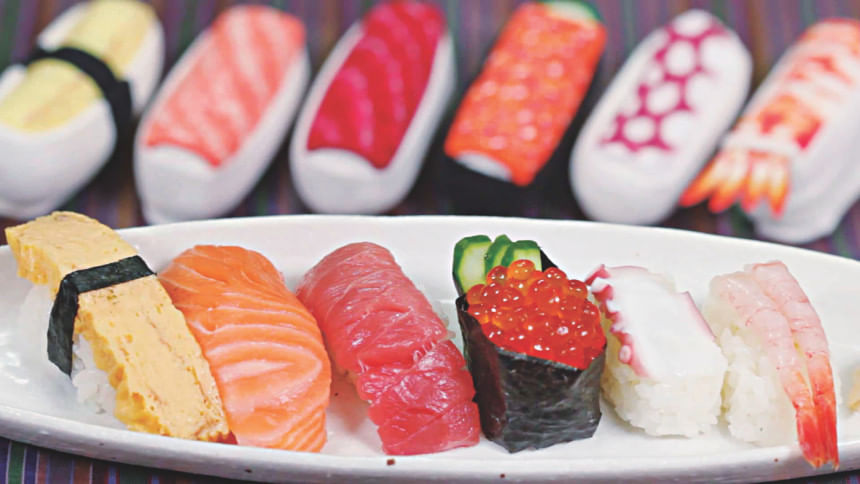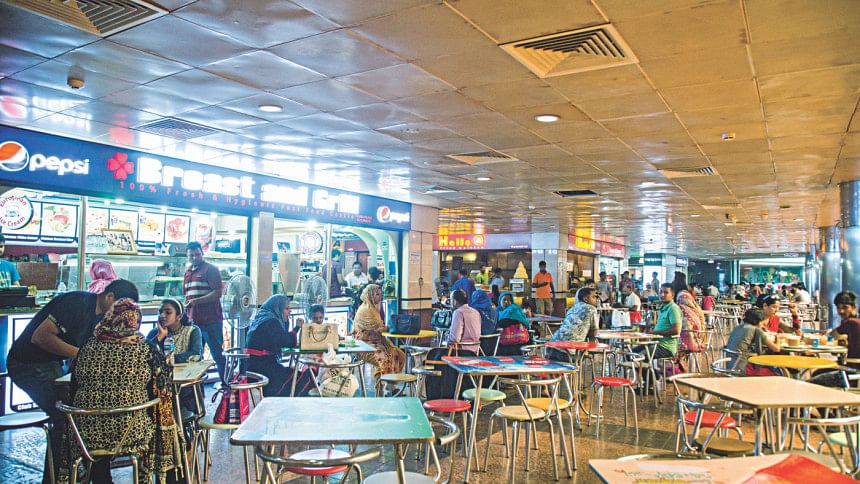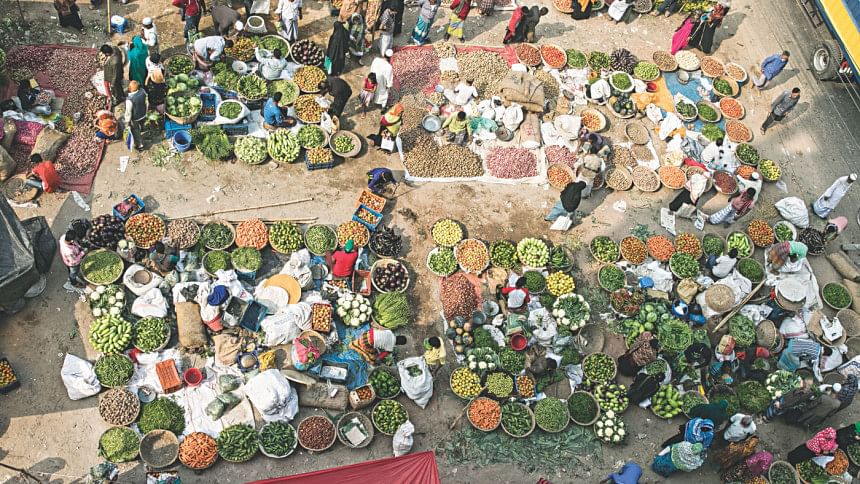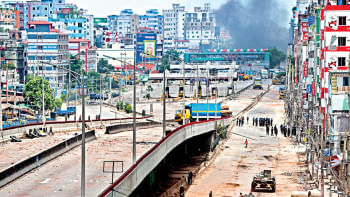Culinary revolutions of the decade

In an attempt to make sense of this chaos, what would you say were the trends Dhaka's gastronomic scene saw in the past decade — the top 10 culinary revolutions of the 2010s?
Behold, burgers!
The evolution of burgers has been a rather long one. Once upon a time, we used to devour a piece of fried chicken or vegetable cutlet carelessly tucked between a half-sliced bun. Then came along American Burger, elevating the whole burger business.
And in the 2010s, several burger joints such as Takeout and Madchef opened up and took everyone by storm, with food enthusiasts embracing the idea of gourmet burgers, with splendidly grilled patties and a wide range of add-ons, from eggs to jalapenos to mushrooms.
And hence, we found our new love: big, juicy, and messy burgers!

As hot as wasabi
We also fell in love with Japanese food. Before 2010, how many Japanese eateries in Dhaka could you name? But today, that is a long list!
At one point in time, Samdado, and perhaps a couple of others, were the only options when it came to Japanese cuisine. But the 2010s — or rather, the second half of the decade saw a change. And bento box became our favourite platter, and sushi with potent spicy wasabi became the common craving!
Jhalmuri 2.0
Things have also changed in the local cuisine scenario. Our love for jhalmuri has been eternal. And perhaps, that is why when jhalmuriwalas became mad scientists and boldly started experimenting with their age-old basic recipe, we just shrugged or chuckled and decided to try it out.
From jhalmuri made with various kinds of meats and offal to a range of sauces and spices added, nothing is off the menu.
Prices of these grand jhalmuris are unbelievable. Compared to ordering a crude paper cone of jhalmuri at Tk 10 or Tk 20, a plate of jhalmuri 2.0 can come with price tags of Tk 50, Tk 100, or even more!
And they are worth it. Tiny eateries like Zhalmuri in Mohammadpur get really crowded.

Tea connoisseurs by the street
Much like the case of tea, where the classic milk tea and black tea continue to rule, flavoured teas have also become very popular. Several street-side tea vendors — the beloved 'tong' — now offer a wide variety of flavoured teas, with the student populace really taking it in.
And not all even fall under the 'tong-er-dokan' category. To illustrate, Tantaba T in Mohammadpur, a cute, tiny café that opened just last year, serves many different flavours, topped with their special cream cheese.
This popularisation of flavoured teas over the past decade is a trend we have seen almost indiscriminately all over Dhaka.
Midnight meals
Another trend which the entire city came to embrace is eating out for sehri.
Arguably, it started in Old Dhaka; and people from the 'new town' also went south, and places like Najira Bazar and eateries like Al-Razzak rose to an immense height of fame. The food — kebabs and biriyanis and what not — and the chaos and the festive atmosphere allured (and continues to allure) crowds.
Eventually, Dhaka North caught up with it. Be it in Gulshan or Uttara, new and modern restaurants started to keep their doors open throughout the night during Ramadan, thus adding to the list of cuisines or places you can eat or go to at three in the morning!

'Go-cart'
One fine morning, sometime in the 2010s, we realised that food carts raced their way onto our streets and pavements, and our lives.
Was it the low cost of establishment or real estate that drove this phenomenon? Nobody asked. We were too busy jumping on the bandwagon of embracing the 'hip and cool' food cart culture.
Curiously enough, after a while, many carts slammed the brakes on their businesses, and again, one fine morning in the 2010s, we realised that many of the food carts have disappeared. It was all too fast and furious!
But of course, there are still many carts carrying on a momentum. A stroll in some roads in Dhanmondi should give you the idea.
Food courts redefined
Food courts was not a brand-new phenomenon in the previous decade. The trend was arguably popularised by Bashundhara City much before. The idea of hosting myriad eateries under a shopping mall gained overwhelming acceptance. And a handful of malls followed suit, to some degree or the other.
But the 2010s saw a number of stand-alone food courts (i.e. those not in the premises of any shopping mall). Remember the hype 300 Feet created?
Generally speaking, food courts offered value for money — decent food, which may not necessarily be authentic, but in exchange of very reasonable prices. Such food courts also arranged live music during weekends. And people loved it!
But the entire 'game' was elevated by Chef's Table, which houses many reputed and credible restaurants, offering relatively more authentic or superior quality food. A paradigm shifter!
All things social…
With so many trends and exciting things happening gastronomy-wise, it is obvious that there will be a reflection of that in social media.
For starters, check-ins from people visiting eateries continue to pour in tirelessly; a little excessively too, perhaps. Many users go overboard with insane amounts of posts and selfies. Also, remember when Fish & Co. or Gloria Jean's first opened? Check-ins nearly broke the Internet! No ranting or judging here, good sir, but at least you have to agree that such hypes somewhat excites a marketer, a social media manager, or even a mere keen observer!
Enough beating around the bush, a significant culinary trend in social media comprises food groups, like The Food Talk. Such groups have given a voice to customers, who can now ask for recommendations from fellow group members and also give their two cents on an eatery, or share their grievances.
In addition to these groups, the last few years also gave birth to many food-related blogs and vlogs, where you can learn new recipes, get the basics of cooking right, and also spend time entertaining yourself by watching interesting or funny restaurant reviews.
Right to your doorstep
The Worldwide Web does more, of course. Online food delivery companies have grabbed a piece of the pie that is the culinary industry. From HungryNaki to Uber Eats, we now have several such organisations from where we can order our next meal, which, of course, can be selected from numerous restaurants — yet another fantastic culinary revolution that boomed in the previous decade.
Healthy, wealthy, and wise!
Fortunately, a movement of healthy eating was also prevalent in the decade to some extent. "Organic food," "farm-to-table," and "farmers' market" became buzz words. A small but growing segment of customers also started to seek gluten-free food. Salads became quite a hit for many. Ideas such as keto diet became trendy.
And such tastes and preferences meant yet another commercial opportunity.
On the other hand, the more adventurous food connoisseurs stepped outside Dhaka to get the best and freshest, also based on certain foods' association with geography. And hence, going to Mawa Ghat for the best pair of hilsa, or at least sourcing the finest mangoes to your home with the help of your 'Chapainawabganj guy,' were ardently undertaken.
Honourable mentions
There are a number of other trends in 2010s which deserve at least a fleeting glance, and hence, our honourary mentions: the sheer number and frequency of food festivals organised by hotels, the so-called Fire Paan or Agun Paan at Najira Bazar, which was the talk of the town, new culinary hubs, richer variety of street food, the rise of large multi-storied buildings where all or most of the floors are occupied by restaurants, and last but not the least, a considerable influx of foreign brands setting foot in Dhaka as franchises.
Indeed, 2010s have been an exciting time; which also makes one wonder, what would be the culinary revolutions of this new decade? What do you reckon this list will include if compiled in the year 2030, looking back at the 2020s?
Now, there's a thought!

 For all latest news, follow The Daily Star's Google News channel.
For all latest news, follow The Daily Star's Google News channel. 



Comments